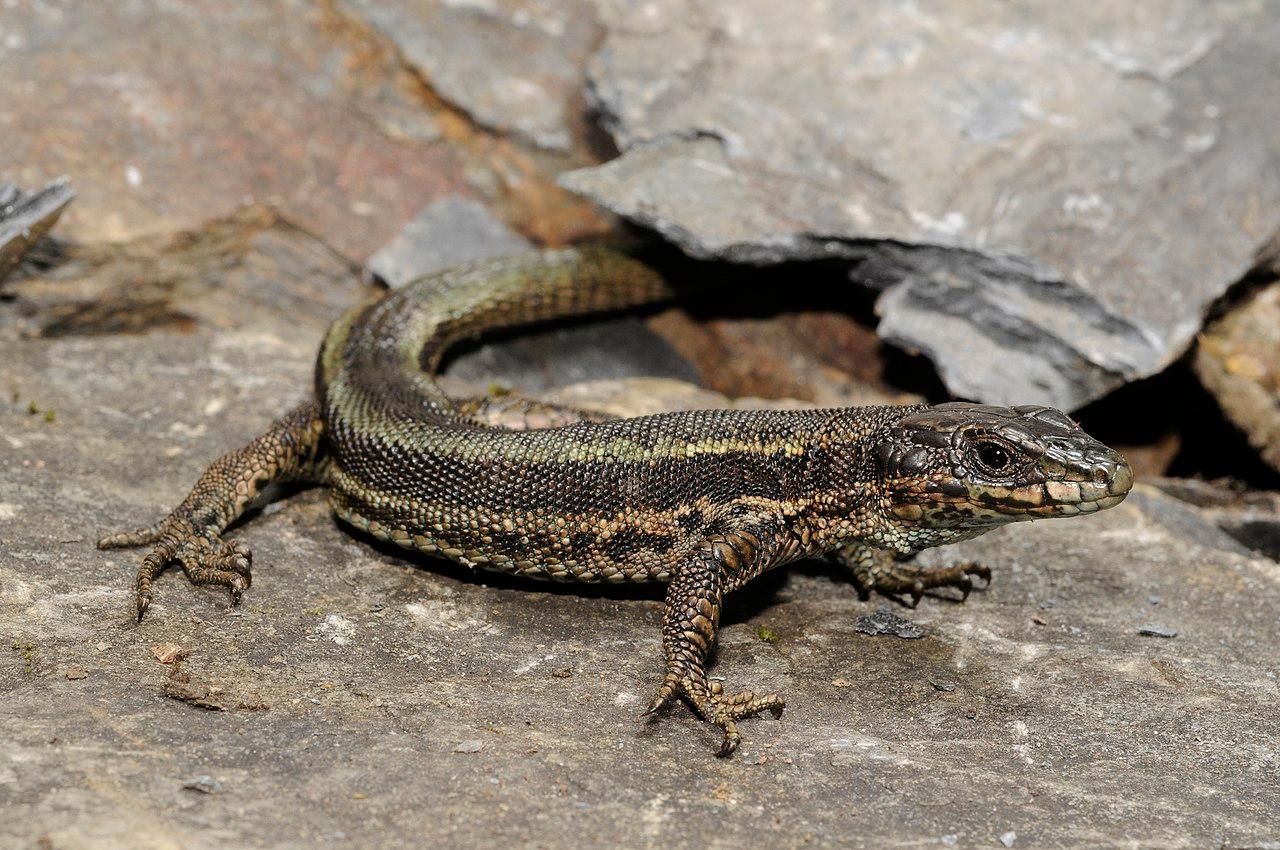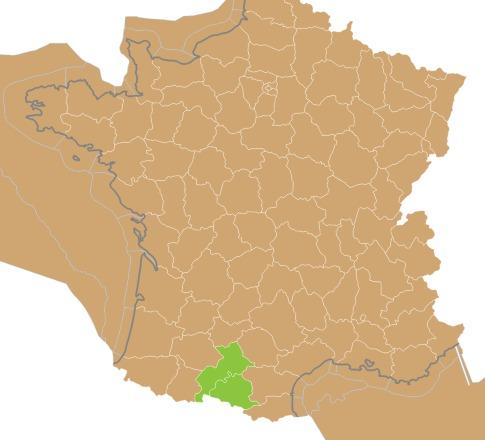This lizard is found in a small area of the central Pyrenees on the Spanish-French border. It lives only in Mauberme massif, including its foothills between the Val d'Aran in Spain and the Ariége in France between 1,640 metres and 3,000 metres.
They are a medium-sized lizard. Males can reach a total length (including tail) of up to 62 mm, females up to 67 mm. Their backs have a greyish colour, which can sometimes be tinted brown or olive. The back of some males is a glossy metallic green. In the middle of the back sometimes a fine dark line can be visible. A line of dark spots usually runs along both sides of the back and sometimes extends to the tail. In the front half of the body two irregularly rimmed, light longitudinal bands are developed on the border between the back and the flanks. A wide, dark brown to black band runs along each flank from the temple to the proximal portion of the tail. The underside is white, but can be faintly bluish or greenish depending on the light.
They breed as soon as the snow melts and the females lay their eggs in early summer which hatch in late summer. They feed on various invertebrates (insects and their larvae, arachnids, worms ...).
They occassionaly coexists, especially below 2000 m, with the Common Wall Lizard and the viviparous lizard is also often present on the moors and grasslands in and around the rocky areas which could lead to confusion with identification.
Like all endemic species of the Pyrenees whose biology is adapted to the climatic regime of the middle and high mountains (and associated ecosystems), the Aran Valley Rock Lizard is threatened by global warming.
Considered to be ENDANGERED

